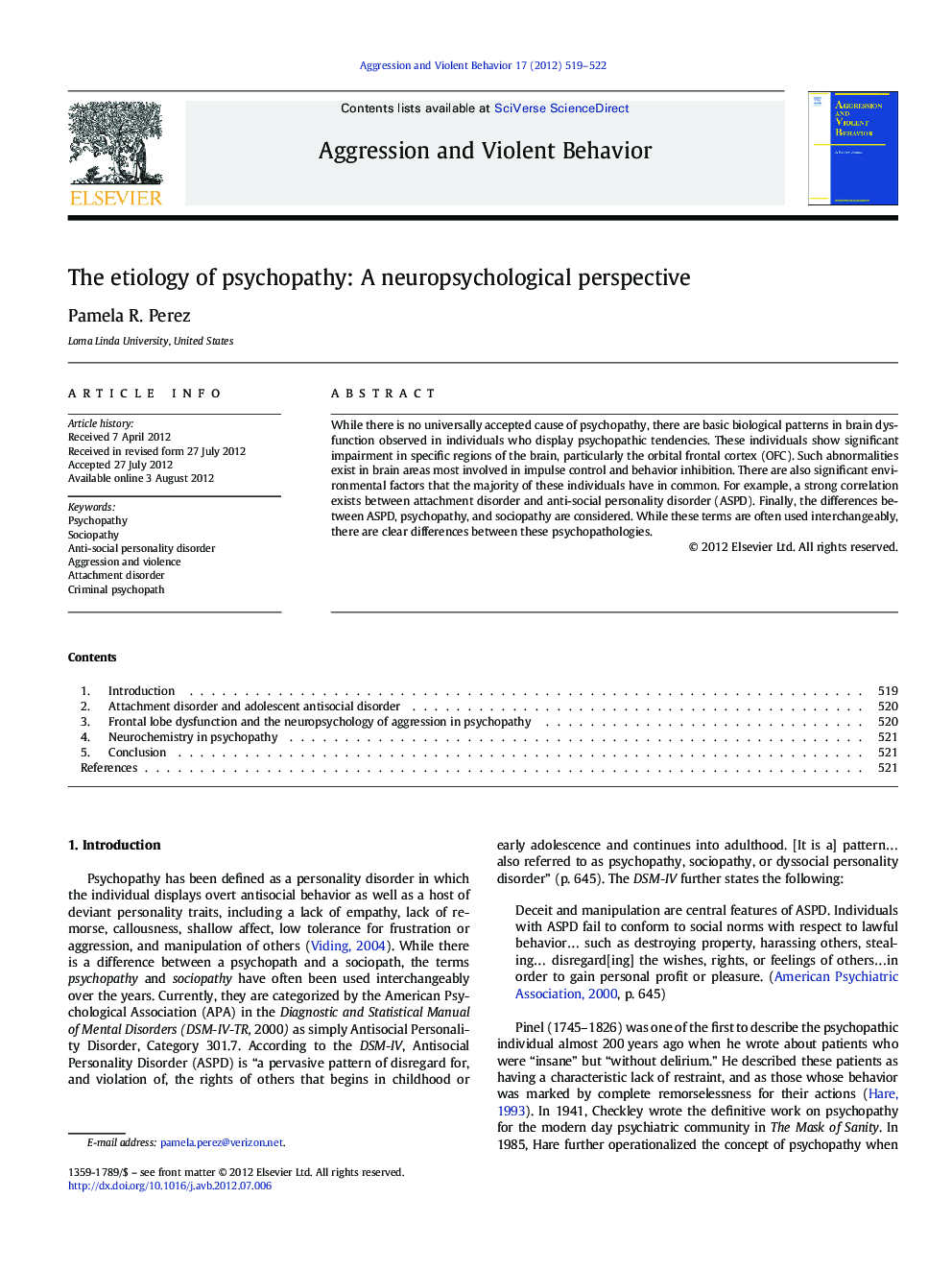| Article ID | Journal | Published Year | Pages | File Type |
|---|---|---|---|---|
| 94599 | Aggression and Violent Behavior | 2012 | 4 Pages |
While there is no universally accepted cause of psychopathy, there are basic biological patterns in brain dysfunction observed in individuals who display psychopathic tendencies. These individuals show significant impairment in specific regions of the brain, particularly the orbital frontal cortex (OFC). Such abnormalities exist in brain areas most involved in impulse control and behavior inhibition. There are also significant environmental factors that the majority of these individuals have in common. For example, a strong correlation exists between attachment disorder and anti-social personality disorder (ASPD). Finally, the differences between ASPD, psychopathy, and sociopathy are considered. While these terms are often used interchangeably, there are clear differences between these psychopathologies.
► We compare the differences between psychopathy and sociopathy. ► We explain the relationship between psychopathy, sociopathy, and attachment disorder. ► We discuss the neuropsychology of aggression. ► We discuss the brain's neurochemistry in the psychopathic individual.
